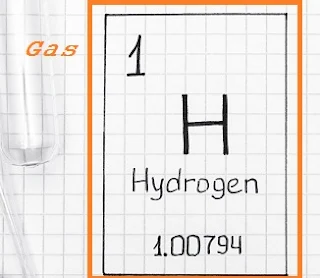The Classification of compounds in chemistry can be classified generally into two broad groups. 1. Ionic Compound 2. Covalent Compound. In this blog post types of mixtures and different mixtures and compounds are.
1. Ionic Compound
Ionic compounds do not exist
in independent molecular form. They form a dimensional crystal lattice in
which the ion is surrounded by oppositely charged ions these oppositely charged ions attract each other strongly so ionic so ionic compounds have high melting points and
boiling points. These are represented by the formula unit.
{tocify} $title={Table of Contents}
Ionic compounds examples:
- C++ , O2++ ,Na++
2. Covalent Compound
The covalent compound
mostly exists in molecular form. A molecular is a true representative of a covalent
compound and its formula is called a molecular formula.
Covalent compounds
examples:- Water H2O, Calcium
Oxide CaO, sodium Chloride NaCl, Calcium Carbonate CaCO3.
Define Mixture:- When two or more
elements or compounds mix up physically without any fixed ratio, they form is
mixture.
Type of Mixture
Genranaly mixtures are two types.
(a) Homogeneous Mixture
(b) Heterogeneous Mixture
(a) Homogeneous Mixture
Mixtures that have
uniform composition throughout e.g. Air, Ice Cream, Gasoline.
(b) Heterogeneous Mixture
Mixtures that do not have
uniform composition throughout. e.g. Soil, rocks, and wood.
A mixture of Soil:- It is a mixture of sand, clay, mineral salt,
water, and air.
A mixture of Air: - It is a mixture of nitrogen, oxygen, carbon
dioxide, noble gases, and water vapour.
A mixture of Milk: - It is a mixture of water, sugar, fat, protein,
mineral salt, and vitamins.
Difference Between Compound and Mixture
Compound
1) It is formed by a chemical combination of atoms of an element.
2) The constituents lose their identity and form a new substance.
3) Compounds always have fixed composition by mass.
4) The compounds cannot separated by physical means. Every compound is
represented by a chemical formula. compounds have homogeneous compositions.
Compounds have sharp and fixed melting points.
Mixture
1) Mixture is formed by the simple mixing up of the substance.
2) Mixtures do not have a fixed composition.
3) The components can be separated by physical method.
4) Mixture
shows properties of the constituents. It consists of two or more components and
does not have any chemical formula. They are homogeneous and heterogeneous in
composition. Mixtures do not have a sharp melting point.
How to Write a Chemicals Formula?
Compounds are
represented by chemical formulas and elements are represented by symbols. The chemical formula of a compound is written by these steps.
(A) Symbols of two
elements are written side in the order of positive ion first and negative ion
latter.
(B) The valency of each
ion is written on the right top corner of its symbols e,g. Na++, Ca++, O--.
(C) If valencies are
similar then they of feet each other and not written chemical formula.
(D) If valencies are
dissimilar then the cross exchanged method is applied.
(E) If an ion is a
combination of two or more atoms which is called radicals, then valency is written in parenthesis.
Example:- Na+ Cl⁻ =NaCl
Define Elements
It is a substance made up of the same type of atoms having the same atomic number, and cannot be decomposed into simple substances by ordinary chemical means. At present 118 elements are known out of which 92 occur naturally.
Solid:- Majority of the exist as solid e.g. Sodium, Copper, Zinc, gold.
Liquid:- Few elements which occur in liquid state e.g. Mercury and Bromine.
Gasses:- A few elements exit as a gas state e.g. Hydrogen, Nitrogen. Oxygen. Chlorine.
Define elements based on properties
Based on their properties elements are divided into three types. 1. Metal 2. Nonmetal 3. Metalloids.
Metal: An element that always from a positive ion by losing electrons is called metal. For Example: in Sodium, Silver, and Zinc about 80% of elements are metal.
Nonmetal: An element that is always from a negative ion by gaining an electron is called a nonmetal. For Example: Carbon, Sulfur, Fluorine, and iodine.
Metalloids: Elements having physical and chemical properties of both metal and nonmetals For Example: Boron, Silicon, Arsenic, Germanium.





